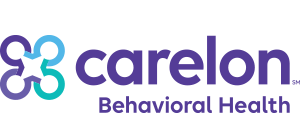The Seeking Safety treatment model helps individuals whose lives have been impacted by addiction and trauma, as well as certain other mental health concerns. Seeking Safety is one of the many beneficial elements of care that can be incorporated into your personalized treatment plan at Bayside Marin.
Introduction to Seeking Safety
An introduction to the Seeking Safety treatment model
Seeking Safety is an evidence-based, research-supported model for counseling that was developed in the 1990s. It was initially created to help individuals who were struggling with both addiction and trauma, though its use has expanded over time to include a much broader population.
Seeking Safety is a supportive model that is focused on the present. Although the model was designed to help people overcome the impact of trauma, it does not require you to engage in detailed discussions about traumatic events that you have experienced.
Seeking Safety promotes the development of specific skills that can help you to live a healthy and more satisfying life. You’ll learn to eliminate self-defeating thought and behavior patterns while adopting more positive ways of thinking and acting.
The Goals of Seeking Safety
The objectives of the Seeking Safety treatment model
The Seeking Safety model is based upon the following five main concepts:
- Safety as the priority of treatment
- Integrated treatment
- A focus on ideals
- Four content areas: cognitive, behavioral, interpersonal, and case management
- Attention to clinician processes
In general, your goals with Seeking Safety will focus on improving your personal safety in relation to behaviors, thought patterns, relationships, and emotional regulation. Seeking Safety can also help you to reduce or more effectively manage symptoms associated with trauma.
As with all forms of effective therapy or counseling, the specific goals of your Seeking Safety experience at Bayside Marin will be determined by what’s most appropriate and most beneficial for you.
What Topics Are Addressed via Seeking Safety?
Topics and skills that may be addressed during your Seeking Safety experience
The Seeking Safety approach is organized into 25 topics, which are further classified into four areas. The cognitive, behavioral, and interpersonal areas all include seven topics. The combined area includes four topics. During your time in counseling that incorporates Seeking Safety, you may address some or all of the following 25 topics:
Cognitive:
- Integrating the Split Self
- PTSD: Taking Back Your Power
- Discovery
- Recovery Thinking
- Compassion
- Creating Meaning
- When Substances Control You
Behavioral:
- Detaching from Emotional Pain: Grounding
- Taking Good Care of Yourself
- Self-Nurturing
- Commitment
- Red and Green Flags
- Respecting Your Time
- Coping with Triggers
Interpersonal:
- Healing from Anger
- Healthy Relationships
- Setting Boundaries in Relationships
- Asking for Help
- Getting Others to Support Your Recovery
- Community Resources
- Honesty
Combination:
- Introduction to Treatment/Case Management
- Safety
- The Life Choices Game (Review)
- Termination
As noted earlier, your Seeking Safety experience may involve some or all of the topics listed above. There is no requirement that participants address 25 topics, nor is there a prescribed order in which these topics must be encountered.
If you participate in Seeking Safety during your time at Bayside Marin, you’ll only work on the topics that are relevant to your needs and appropriate for you according to your personalized treatment plan.
What Happens in Seeking Safety Counseling Sessions
Learn about the processes and procedures of Seeking Safety counseling sessions
Because Seeking Safety counseling sessions involve contributions from all participants, every session will be a unique experience. However, when you participate in Seeking Safety at Bayside Marin or elsewhere, you can expect certain common elements.
For example, a typical Seeking Safety counseling session will begin with a “check-in.” This process introduces the topic of that day’s session and solicits feedback from all participants. Since Seeking Safety can be applied in both individual and group settings, this process can vary considerably depending upon the type and size of the session.
Following the check-in, you’ll be presented with a motivational or inspirational quote that is related to the day’s topic. This quote can help provide context or perspective to the topic.
Next, the individual who is leading the session will provide you with a handout. You’ll review and discuss the information on this handout. This process will usually constitute the majority of the session.
Once you’ve completed your discussion of the information on the handout, you’ll participate in the “checkout” portion of the session. This part of the session is focused on making a personal connection with the day’s topic so that you’re best prepared to incorporate the skills that you’ve learned.
Who Can Participate in Seeking Safety?
Seeking Safety can benefit adolescents and adults who have been impacted by addiction and trauma
When Seeking Safety was developed in the 1990s, it was initially intended to serve women who were struggling with both a substance use disorder (which is the clinical term for addiction) and posttraumatic stress disorder (PTSD).
Over the years, the population of people who can benefit from Seeking Safety has expanded. Participants no longer need to be experiencing both addiction and PTSD. For example, Seeking Safety can help people who have been abusing alcohol or other drugs but have not developed an addiction. It can also help people whose lives have been impacted by the effects of trauma but whose trauma-related symptoms do not meet the clinical criteria for a diagnosis of PTSD.
The benefits of Seeking Safety are now understood to extend beyond those who have been dealing with addiction or trauma. Individuals whose lives have been disrupted by certain additional mental or behavioral health challenges have also responded well to the Seeking Safety model.
Today, Seeking Safety is incorporated into treatment for adolescents, adults, and seniors, with no gender restrictions on participants. The approach has been successfully implemented in inpatient, residential, and outpatient settings.
To learn more about Seeking Safety, and to determine whether this approach may be beneficial for you or a loved one, please contact Bayside Marin. A member of our team is available 24/7 to answer your questions about Seeking Safety and all other elements of effective personalized treatment.









